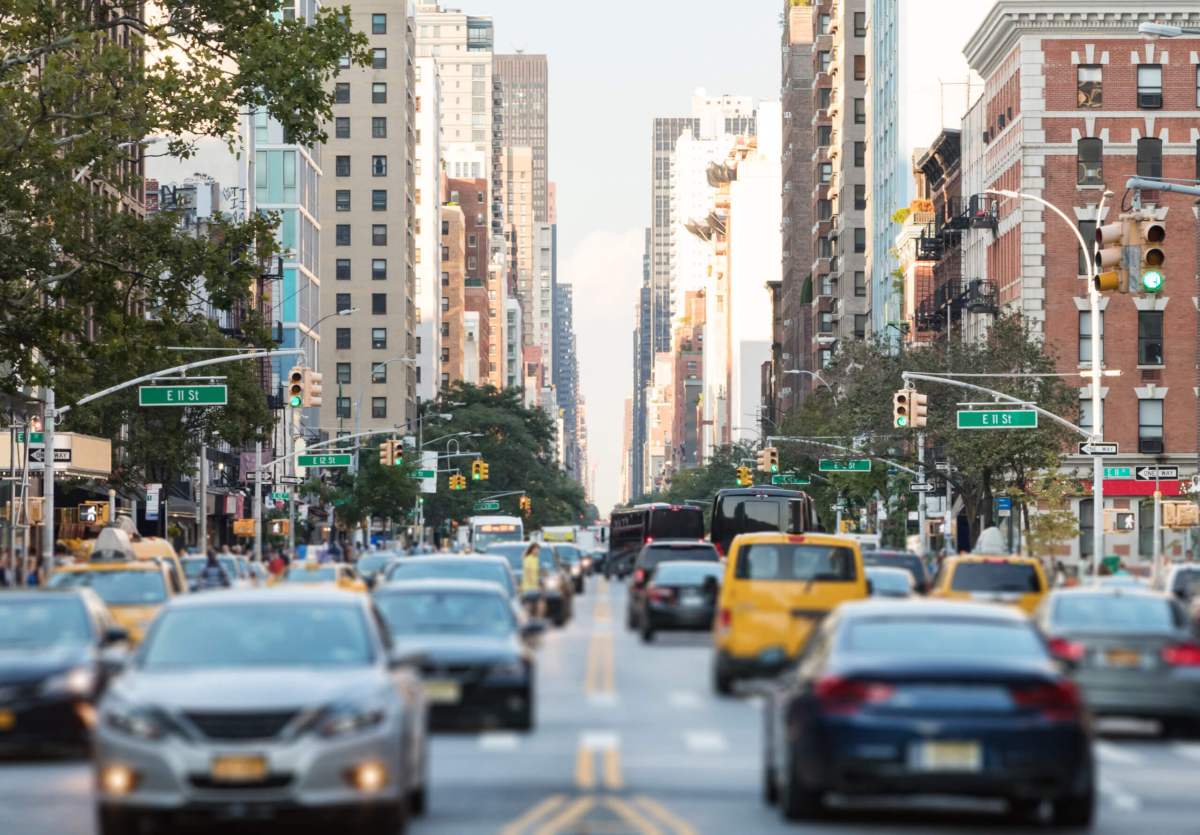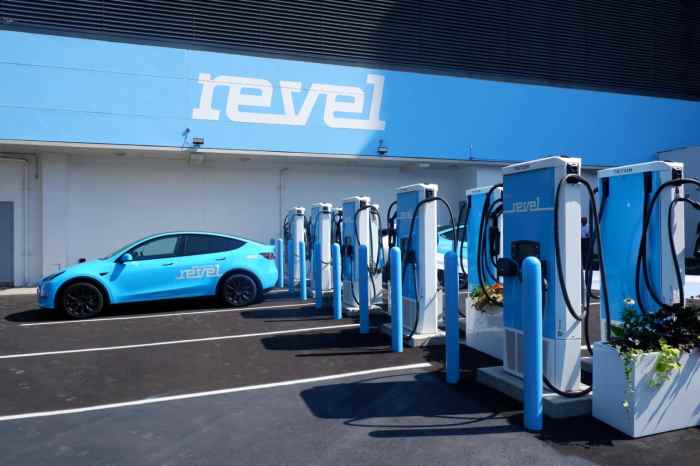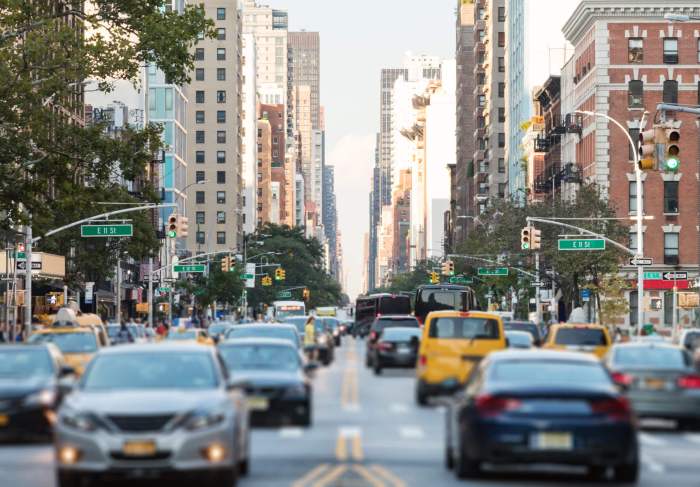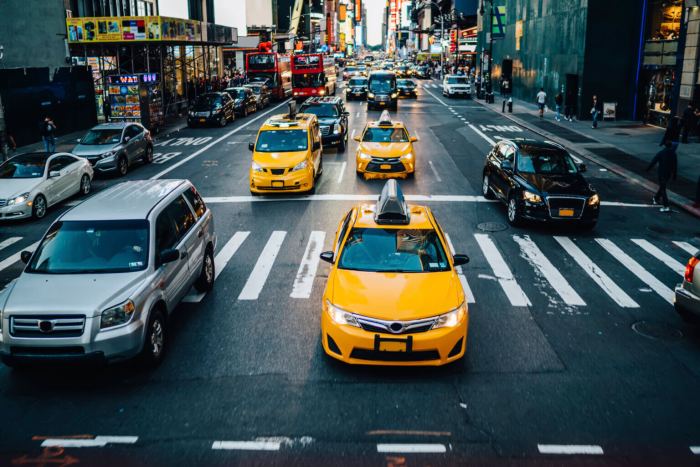The MTA’s congestion pricing plan is still running afoul of New York City’s rideshare industry and its tens of thousands of drivers, even after the agency committed to capping tolls on for-hire vehicles and yellow cabs to one per day in its final environmental assessment of the program.
In its 958-page final environmental assessment, released after getting an effective green light from federal regulators, the MTA committed to, among other things, ensuring that New York City taxis and for-hire vehicles are not tolled more than once per day when congestion pricing is implemented, which at this point is expected sometime in 2024.
That came after considerable backlash — and demands for exemptions — from cabbies and rideshare drivers, who are some of the most frequent crossers into Manhattan’s central business district below 60th Street, where the MTA plans to toll vehicles somewhere between $9-23 during peak hours to enter.
The plan, approved by legislators in 2019, aims to both reduce brutal congestion in Manhattan by discouraging car commuting and raise billions of dollars for New York’s aging mass transit infrastructure.
Still, FHV drivers and cabbies say the plan is unduly burdensome. The Independent Drivers Guild, which represents some 80,000 FHV operators, said the plan would unfairly “double tax” commercial drivers, as yellow cabs already pay a $2.50 congestion surcharge and FHVs pay $2.75 to enter Manhattan south of 96th Street, implemented before the passage of congestion pricing in 2019. Over 10,000 rideshare drivers and passengers have signed IDG’s petition calling for a full exemption from the toll.
“Rideshare drivers were already charged a congestion tax in the first phase of congestion pricing. It is unfair to add another congestion tax on these drivers – and it also violates federal law by disproportionately harming minority and low-income populations,” said IDG’s president, Brendan Sexton. “To double tax those who can least afford it is obscene and puts the livelihood of thousands of low-income, immigrant rideshare drivers in jeopardy. The MTA should leave the status quo in place for the drivers, and reassess in a few years.”
The IDG estimates the tolls could add up to $7,000 in bills each year for FHV drivers, who have been hit hard by inflation and gas. A survey put out by the guild last year found that 78% of rideshare drivers struggle to pay their rent or mortgage, 66% struggle to make their car payments, and just over half struggle to afford food.

To make matters worse, Lyft, the nation’s second-largest rideshare app, effectively said that drivers would be stuck with the bill for the tolls instead of the company. That’s because many drivers work for both Uber and Lyft, and with tolls capped at one per day, Lyft claims the tech giants couldn’t know whether a driver crossing into the CBD while driving for one company had already done so earlier in the day for the other.
“The MTA’s solution for rideshare would be an infeasible logistical nightmare. There is no way for companies to know if a driver has already passed through the congestion zone by giving a ride on another platform or ride service,” Lyft said in a statement. “It would fall on the driver’s shoulders to pay the fee. Instead of burdening drivers further, the MTA should acknowledge that our industry has for years already paid them a congestion pricing fee and focus on ensuring the program is funded fairly across all who use our roadways.”
Lyft’s main competitor, Uber, struck a more conciliatory tone on the MTA’s proposal, and did not say outright that the bill would be footed by drivers, but the rideshare giant still said the final toll rates should factor in what drivers already pay.
“While pleased it’s finally moving forward, the once-a-day cap only attempts to satisfy the federal government’s economic justice concerns,” said Josh Gold, Uber’s policy and communications director. “Now, as required by law, it’s time for the MTA to factor in taxi and FHV’s existing congestion surcharge before setting the toll amount, if any, for taxis and FHVs.”
Uber has long staked a somewhat ambivalent position on congestion pricing. In a Streetsblog op-ed last year, Gold noted that the company supports congestion pricing because “good, robust public transportation is good for business” while traffic is “bad for business.” In the same op-ed, Gold said that passengers, not drivers, should pay the charge, and also floated applying charges for trips entirely within Manhattan, rather than those originating in outer borough neighborhoods with fewer transit options.
Meanwhile, the New York Taxi Workers Alliance, a union repping some 21,000 cabbies and FHV drivers, says that the rideshare companies should foot the entire toll.
“Drivers should absolutely not have to pay a dime of the fee,” said Bhairavi Desai, NYTWA’s executive director. “Given already existing reporting requirements to the [Taxi & Limousine Commission]…Lyft and Uber should have the means to figure it out.”
Uber and Lyft, regulated as “high-volume” FHV services, are already required to report considerable trip information to the TLC, including the date, time, and location of pick-ups and dropoffs, license plate numbers, and fare prices including the cost of tolls and surcharges. The TLC did not respond to a request for comment by press time.
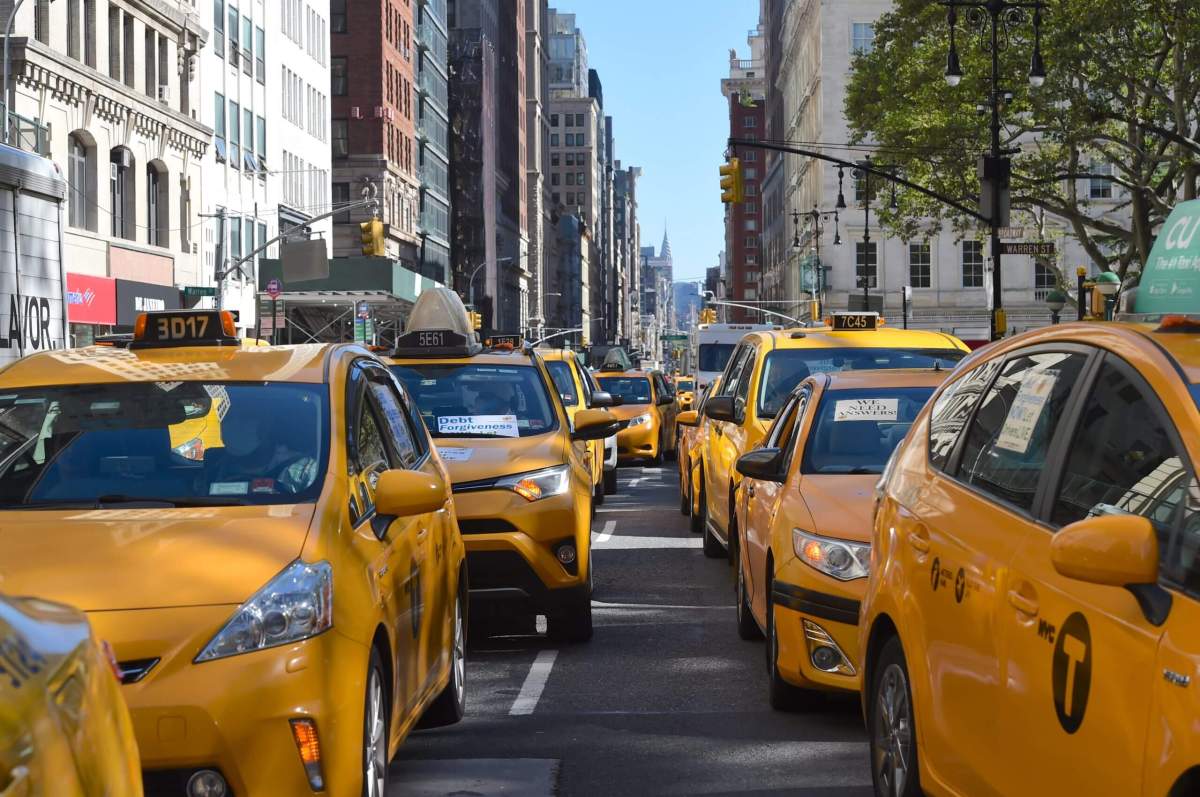
NYTWA is also pushing for a full exemption for the city’s 7,000 yellow cab drivers, who in addition to the $2.50 surcharge have paid an additional 50 cent fee to the MTA since 2009, which Desai says costs drivers about $10,000 per year. All told, both fees have raised about $1 billion for the transit agency. Meanwhile, the city has only recently begun addressing the spiraling debt crisis for the city’s cabbies caused by rampant financial speculation on the value of medallions, which lost about 90% of their value after the rise of Uber and Lyft.
“Yellow cabs should be exempt entirely. Once a day is still thousands of dollars a year for struggling drivers,” Desai said in a statement on May 12. “How much more do drivers have to give up? This is just a money grab off the backs of a working-class workforce that labors 60 hours a week to survive. We’re going to fight it.”
Across all seven of the MTA’s potential “tolling scenarios,” the daily “vehicle miles traveled” by taxis and FHVs decrease between 1% and 8.8% citywide. With the release of the final environmental assessment, the MTA is now in a 30-day public comment period before the Federal Highway Administration could issue a final “Finding of No Significant Impact.” If that happens, the MTA’s Traffic Mobility Review Board will begin deliberating on final tolling rates.
Asked for comment, the MTA referred back to a Sunday op-ed by Chair and CEO Janno Lieber in amNewYork Metro, who noted that Manhattan’s congestion slows down emergency vehicles and buses and costs the regional economy about $20 billion annually.
“Congestion pricing is a proven answer to these problems. Stockholm, London, and Singapore each saw a 25% reduction in congestion and a 10-20% drop in carbon emissions after implementing their own programs,” Lieber wrote. “Travel speeds increased too. New York deserves the same, and we at the MTA are determined to see it through.”
Read more: Daniel Penny rejects claims of white supremacy in interview.



